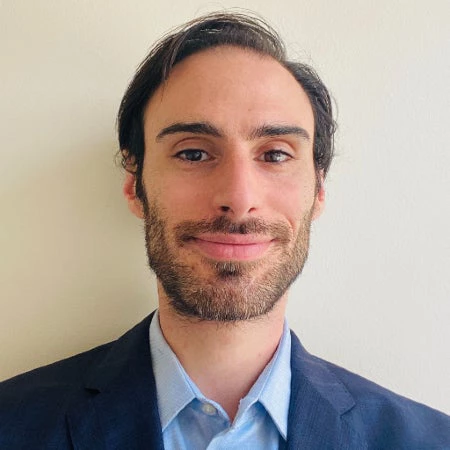 Nurses in Sri Lanka attend to their work.
Nurses in Sri Lanka attend to their work.
The COVID-19 pandemic is prompting a fresh look at options to ensure reliable power for health facilities , including the Vavuniya General Hospital in Sri Lanka’s Northern Province. In line with an overall push to boost the share of renewables, the government of Sri Lanka is pursuing new power solutions for Vavuniya and about 20 other hospitals across the nation.
The World Bank is assisting as part of a multi-sectoral pandemic response in Sri Lanka. Similar initiatives are underway in other countries around the world, including Afghanistan, Madagascar, and Nigeria, to name a few.
Parts of a solution
Distributed photovoltaics (DPV), installed on rooftops or open spaces near buildings, are proliferating as a low-cost option for emergency power supplies. Many developing countries already use DPV as a long-term primary or secondary power source for health care facilities in rural and urban settings. While operating costs are minimal, average investment costs are dramatically lower today than even a few years ago, making DPV more economically attractive. When coupled with batteries, which are also becoming cheaper, DPV systems can contribute to reliable power around the clock.
With these solutions, diesel generators can become more of a last resort, instead of being the main or only source of essential back-up power when the grid is unavailable. Less use of diesel generators helps avoid the high cost of fuel, vulnerability to shortages, and toxic emissions.
Diverse technology options are available for distributed renewables. They range from individual components to pre-packaged “box” solutions which combine DPV, batteries and generators of varying sizes, including up to mini-grid level for larger sites. Under the auspices of the Energy Storage Partnership facilitated by the World Bank, a survey of suppliers has found that significant inventory is available despite logistics disruptions.
Electrical devices are also increasingly available in more energy efficient models, which can help avoid oversized power systems in new health care units. Correct system sizing is crucial where financial resources are limited, but many variables need to be considered.
For example, the electricity needs of intensive care units (ICU) differ greatly depending on how many beds are occupied: temporary ICU wards need significant power, but only for a limited time period. Another key factor to consider is that electricity demand from certain medical services may drop while stay-at-home measures are in force. For instance, some hospitals are deferring elective surgeries during the crisis. System sizing strategies need to examine such factors when addressing the health care sector’s power needs in response to the pandemic.
Bringing the parts together
Given all the options, what tools are available to design power solutions for hospitals without full grid electricity? One resource is the HOMER Powering Health Tool, a free online model to help simplify the design process for distributed generation systems for health care facilities. Standing for Hybrid Optimization Model for Multiple Energy Resources, HOMER is a leading resource for mini-grid analyses.
Originally commissioned for USAID’s Powering Health program, the HOMER Powering Health Tool has recently been updated to reflect typical COVID-19 response needs with support from the World Bank’s Energy Sector Management Assistance Program (ESMAP). Users enter the electrical needs manually or select default values for pre-listed devices from one of four health facility tiers as a starting point. The tiers include, for example, a small rural dispensary that would typically screen and refer serious cases to larger facilities such as a district hospital. Based on user inputs, the tool calculates least-cost combinations of batteries, PV, and diesel generators sets – including as back-up to grid electricity if this is available for some hours each day.
The tool runs entirely online and can be used an unlimited number of times with no need to sign in or to download a software. It’s kept simple for non-specialists to use without requiring special training. This comes with limitations, of course. For certain advanced needs, other products are available, such as the full, licensed software of HOMER Energy by UL or the free System Advisor Model (SAM) of the U.S. National Renewable Energy Laboratory (NREL). The latter is especially useful for systems that may feed DPV power to the grid when it is not needed on site. In Sri Lanka, the World Bank is applying these tools to optimize solutions to strengthen power for Vavuniya and other hospitals.
From one to many
With a standard lifetime of 20 years, DPV systems can supply clean energy to the national grid. They can also become the backbone of community mini-grids. The value of both options goes well beyond the pandemic. DPV can help not only the consumers who host the systems but also a power system that it feeds. DPV can reduce grid congestion and energy losses for utilities. It can also displace more costly generation from wholesale sources while promoting resilience.
Sri Lanka has already been promoting DPV such as through its Rooftop Solar Power Generation Project, in partnership with the Asian Development Bank. Nationwide, rooftop installations are on track to reach a total of 200 megawatts capacity by the end of 2020, equivalent to around 7 percent of system peak demand. Northern Province alone has added over 3 megawatts since 2017, including 17 projects in Vavuniya for businesses and households. Consumers with DPV can choose to feed some or all the power generated into the national grid through the utility providers. In all cases, the DPV significantly reduces consumers’ bills while providing clean energy to the system at a lower cost than fuel-based generation for grid.
Sri Lanka’s initiative shows that solutions to the current crisis can also address longer-term challenges. With a strategic approach, health care facilities can be well-positioned to combat COVID-19 while preparing for the “new normal.”
Subscribe here to stay up to date with the latest Energy blogs.



Join the Conversation